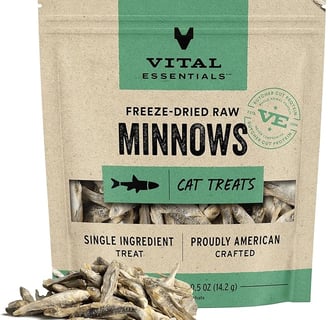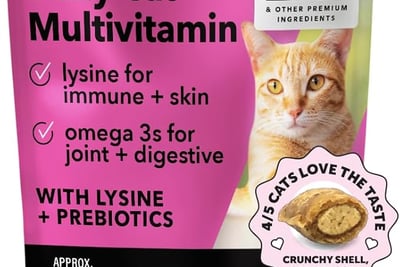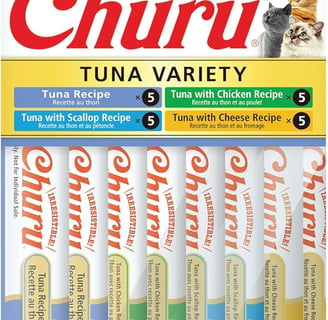The Ultimate Guide to Finding the Best Kitty Treats for Your Feline Friend
5 min read


Understanding Your Cat's Nutritional Needs
Comprehending the nutritional requirements of your feline companion is crucial for promoting their health and longevity. Cats are obligate carnivores, which means their diet must primarily consist of animal-based proteins. These proteins are the building blocks for muscle development, immune function, and overall cellular health. A proper balance of high-quality protein in their treats will not only satisfy their palate but also support their physical well-being.
Fats also play a significant role in a cat's diet. They serve as a concentrated source of energy and are vital for the absorption of fat-soluble vitamins such as vitamins A, D, E, and K. Omega-3 and Omega-6 fatty acids are particularly important, as they contribute to skin health, coat quality, and brain function. Therefore, selecting kitty treats containing healthy fat sources can enhance both taste and nutrition.
Vitamins and minerals are equally essential for a cat's health. Vitamins aid in various metabolic processes, while minerals such as calcium and phosphorus are critical for bone health and cellular functions. Kittens, adult cats, and senior cats may have varying requirements for these nutrients due to differences in metabolic rates and physical activity levels. Consequently, your choice of kitty treats should reflect your cat's age and lifestyle. For instance, active young cats may benefit from higher protein and fat content, while older cats might require lower caloric counts to manage weight effectively.
It is vital to pay attention to your cat’s unique needs when selecting treats. Factors such as health conditions, breed variations, and length of activity all influence their dietary requirements. By understanding these needs, you can select treats that not only satisfy your cat’s cravings but also align with their nutritional requirements, ultimately contributing to their health and happiness.
Types of Kitty Treats Available in the Market
When it comes to pampering your feline friend, the variety of kitty treats available on the market is both diverse and specialized. Understanding the types of treats can significantly influence the health and happiness of your cat. Generally, kitty treats can be categorized into several main types, each offering unique benefits and appeal.
The first category is crunchy treats, which are often baked and have a hard texture. These treats are not only delightful for cats to munch on but also provide dental benefits. Chewing on crunchy treats can help reduce plaque and tartar buildup, promoting healthy teeth and gums. Many pet owners appreciate this added benefit when selecting snacks for their cats.
Soft chews are another popular option. These treats are softer and easier to chew, making them an excellent choice for older cats or those with dental issues. Soft chews often come enriched with various vitamins and minerals, ensuring that your cat receives essential nutrients as they enjoy their snack. These treats are adaptable and can cater to specific dietary needs, such as those needing lower calories or specialized ingredients.
Freeze-dried treats have gained popularity due to their minimal processing and high nutritional retention. These treats often feature single ingredients, such as chicken or salmon and are a great option for pet owners looking for natural snacks without artificial additives. The freeze-drying process preserves nutrients while providing a delectable, crunchy texture that many cats find irresistible.
Lastly, natural treats made from whole-food ingredients are becoming increasingly sought after. These treats often promote health benefits such as hairball control and improved digestion. Ingredients in natural treats can range from high-quality proteins to beneficial fibers, catering to cats with specific health concerns.
By understanding these various types of kitty treats and their unique benefits, pet owners can make informed decisions, ensuring their feline companions receive both enjoyment and necessary nutrients in their diet.
Tips for Introducing New Treats to Your Cat's Diet
Introducing new treats to your cat's diet can be an exciting venture, yet it is essential to approach this process with care to minimize the risk of digestive issues. Start with a gradual transition, incorporating the new treats into your cat's meals over several days. This method allows your feline friend to adjust to the changes without overwhelming their digestive system. Begin by mixing a small amount of the new treat with their usual food, and slowly increase the proportion of new treats while reducing their regular fare.
Portion control is another critical aspect as cats have sensitive stomachs. Offering treats in moderation, such as one or two pieces at a time, can prevent adverse reactions. Additionally, monitor your cat's overall diet to ensure that new treats do not exceed 10% of their daily caloric intake. This balance is vital for maintaining their health while allowing them to enjoy a variety of flavors and textures.
It is also crucial to observe your cat for any allergic reactions or digestive issues after introducing new treats. Signs such as vomiting, diarrhea, or changes in appetite may indicate an intolerance or sensitivity to the new ingredient. If you notice any concerning symptoms, discontinue the treat immediately and consult with your veterinarian for guidance.
To enhance the experience for your cat, consider engaging them during treat time. Use toys or puzzle feeders to create a more enriching environment, making the ritual fun and interactive. This positive association with treat time can help foster a healthy attitude towards trying new items, transforming the experience into a delightful game rather than a mere dietary change.
DIY Kitty Treat Recipes to Try at Home
Creating homemade kitty treats is an enjoyable way to ensure your feline friend gets nutritious snacks tailored to their specific tastes. With just a few simple ingredients, you can whip up delicious and healthy treats that will keep your cat happy and healthy. Here are two easy recipes to consider:
Recipe 1: Chicken and Pumpkin Bites
Ingredients:
- 1 cup cooked chicken, shredded
- ½ cup pure canned pumpkin (not the spiced pie filling)
- 1 egg
- 1 cup oat flour
Instructions:
- Preheat your oven to 350°F (175°C).
- In a large bowl, mix together the shredded chicken, pumpkin, and egg until well combined.
- Add the oat flour gradually, mixing to form a dough.
- Roll the dough into small balls and place them on a baking sheet lined with parchment paper.
- Bake for 15-20 minutes or until golden brown.
- Allow to cool before serving them to your cat.
Recipe 2: Tuna and Catnip Cookies
Ingredients:
- 1 can of tuna in water, drained
- 1 cup whole wheat flour
- 1 egg
- 1 tablespoon dried catnip
Instructions:
- Preheat your oven to 350°F (175°C).
- In a mixing bowl, combine the drained tuna, flour, egg, and catnip. Mix well to create a dough.
- Roll out the dough on a floured surface to about ¼ inch thickness and cut into small shapes using cookie cutters.
- Place the shaped cookies on a baking sheet and bake for 10-12 minutes.
- Let the cookies cool before serving them to your furry friend.
These DIY kitty treat recipes are not only easy to prepare but also allow you to control the ingredients to ensure they are safe and beneficial for your cat. Experiment with different flavors and ingredients to discover what your pet enjoys the most!





